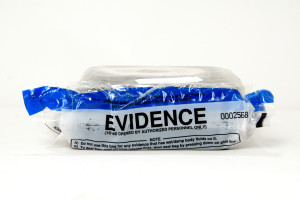 Although Ohio courtrooms may not seem as dramatic and intriguing as those on C.S.I., crime laboratory tests are regularly a part of Ohio criminal cases. In Ohio DUI / OVI cases, and in drug-related cases, crime lab technicians use scientific tests to identify drugs. The lab techs write reports about the analyses and sometimes testify at trial about the tests. A recent case in an Ohio appellate court discusses the detailed procedure for using crime lab reports in Ohio DUI / OVI and criminal trials.
Although Ohio courtrooms may not seem as dramatic and intriguing as those on C.S.I., crime laboratory tests are regularly a part of Ohio criminal cases. In Ohio DUI / OVI cases, and in drug-related cases, crime lab technicians use scientific tests to identify drugs. The lab techs write reports about the analyses and sometimes testify at trial about the tests. A recent case in an Ohio appellate court discusses the detailed procedure for using crime lab reports in Ohio DUI / OVI and criminal trials.
The case is Kettering v. Maston. Maston was pulled over for a questionable marked lanes violation after leaving a known drug house. As one officer was writing a traffic ticket, another officer ran a drug dog around Maston’s vehicle. The drug dog alerted, and the officers searched Maston’s passenger compartment. The officers seized a container of pills which they suspected were controlled substances and charged Maston with Possessing Controlled Substances.
The officers sent the pills to the crime laboratory at the Ohio Bureau of Criminal Investigations (BCI). A laboratory technician analyzed the pills and wrote a report. The report identified the pills as Alprazolam (Xanax). The report was delivered to the prosecuting attorney.
The prosecuting attorney introduced the report at Maston’s trial. Maston’s lawyer objected to the report being admitted as evidence because the lawyer had not been given a copy of the report. The prosecution responded that the report was given to Maston’s previous lawyer. Both the previous lawyer and the lawyer at trial worked for the same office: the county public defender office. The judge allowed the report to be admitted as evidence, and Maston was convicted. Maston appealed the conviction to the appellate court.
The appellate court closely examined the Ohio statute governing the use of crime laboratory reports. The statute states the lab report is admissible at trial unless the defense lawyer demands the testimony of the laboratory personnel who signed the report. Maston’s lawyer did not demand the testimony of the laboratory personnel.
However, the statute also states the report shall be served “on the attorney of record for the accused”. The prosecution served Maston’s previous attorney, but that attorney was no longer the “attorney of record” for Maston. Even though the two attorneys worked in the same office, it is not sufficient to serve the report on the firm or office representing the defendant. The report must be served on the “attorney of record”. As it was not, the judge erred by admitting the report as evidence, so the court of appeals reversed the conviction.
Although the Maston case is not a DUI / OVI case, the same statutory procedure is followed for using lab reports in Ohio DUI / OVI cases. The procedure for criminal cases is found in Ohio Revised Code section 2925.51, and the procedure for DUI / OVI cases is found in Ohio Revised Code section 4511.19(E).
It may seem a little picky that the court required the prosecution to serve the report on the specific individual attorney, especially when the two attorneys worked in the same office. However, the statute is a picky statute. It only gives the defense attorney seven days to demand the testimony of the laboratory personnel after receiving the report. If the attorney only has seven days to file that demand, the report needs to be served on the correct attorney.
The use of laboratory reports is governed by both statutes and constitutions. Both need to be understood by Ohio DUI / OVI lawyers. This article addressed the statutory requirements for using laboratory reports. The next article in this blog will address the Constitutional limitations on the use of laboratory reports in criminal trials.
 Columbus OVI/DUI Attorney Blog
Columbus OVI/DUI Attorney Blog

